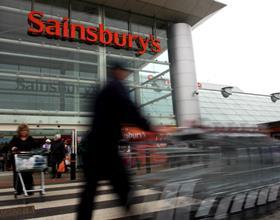
Sainsbury's has suffered a 2.1 per cent drop in like-for-like sales on all items except fuel.
The company said trading conditions in the 12 weeks to 6 June 2015 were being impacted by 'strong levels of food deflation' and a 'highly competitive pricing backdrop'.
However, while overall sales were down, the Big Four retailer revealed that online grocery shopping hit record levels during the quarter.
This latest trading update follows last month's news that the supermarket's pre-tax profit for the year was down 14.7 per cent to £681 million.
Sinsbury's CEO Mike Coupe, said: “We continue to make it easier for customers to shop with us whenever and wherever they want. We have now opened 20 grocery Click & Collect sites and remain on track to have 100 sites by the end of 2015.”
On Sainsbury’s Q1 results, David Gray, retail analyst at Planet Retail, said: “Once more, Sainsbury’s has turned in a subdued set of quarterly like-for-like numbers as the onset of market deflation hits company performance hard. Although the convenience business continues ticking along nicely, the core big-box arm is suffering steep declines in like-for-like sales, meaning that, in a relatively short timeframe, Sainsbury’s has stumbled from being one of the best-performing UK grocers to one of the lesser lights.
“Sainsbury’s appears particularly vulnerable to retail titan Tesco’s domestic recovery, which is inexorably picking up steam. Should Tesco sustain the numbers achieved at Q4 (-1 per cent LFL), Sainsbury’s may well have even further to fall. With practically zero growth to be had in the UK grocery market, Tesco’s gains may well be Sainsbury’s losses.
“Even so, the picture is not all unremitting gloom. Convenience continues to deliver solid growth, as does the online grocery operation. Sainsbury’s is also taking decisive measures to adapt its hypermarket format to the changing retailing landscape through repurposing or sub-letting space, tying up with footfall-generators like Argos and so on. While perhaps not a cure-all, these moves at least indicate management’s willingness to confront pain-points in the business. Such proactive measures will hopefully go some way to easing the company’s pain.”



